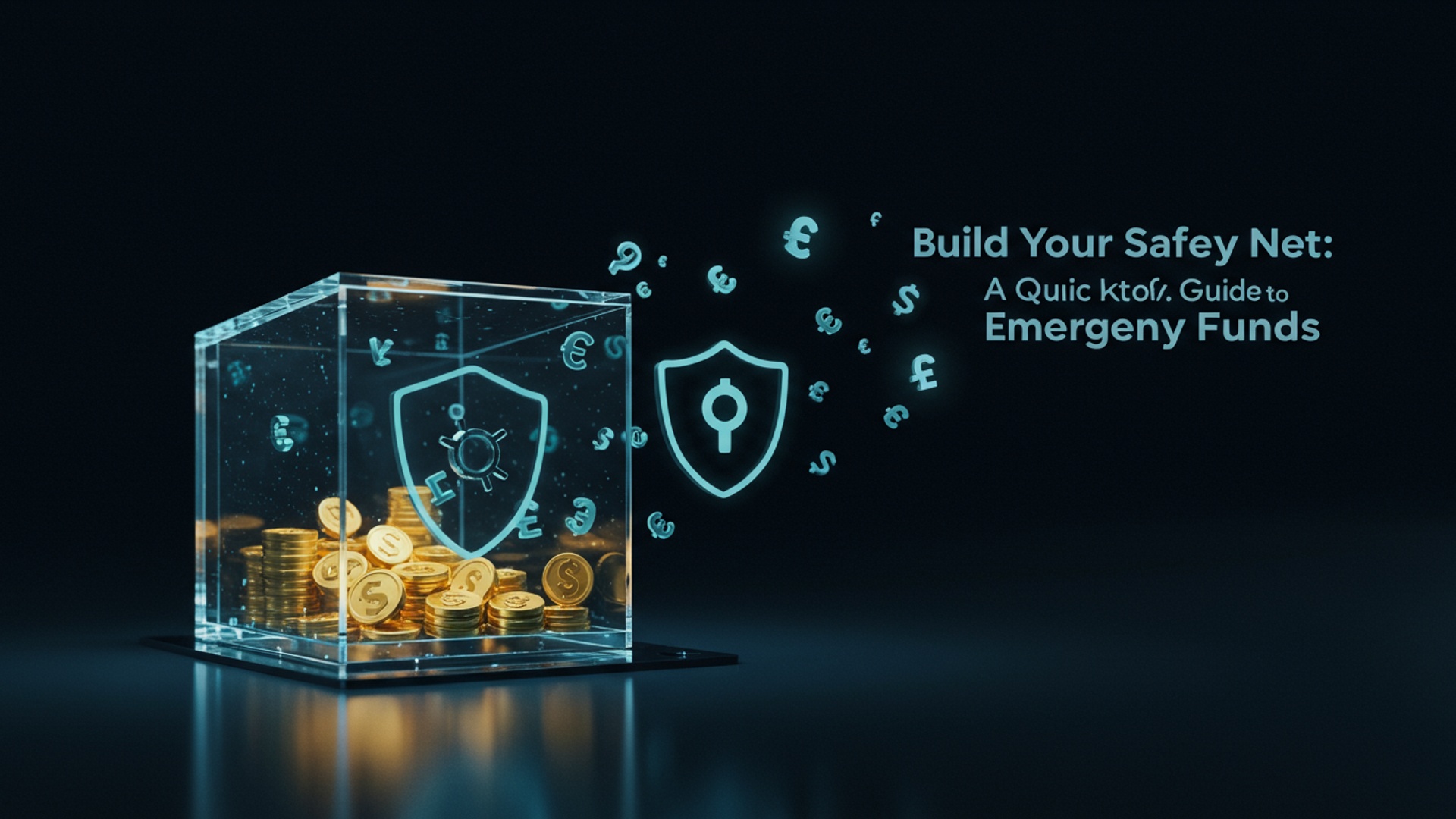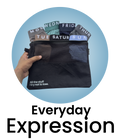Navigating today's dynamic financial landscape, marked by persistent inflation and recent economic shifts like widespread tech sector layoffs, demands robust personal resilience. Many individuals suddenly confront unexpected expenses, from urgent car repairs to unforeseen medical bills, without adequate preparation. Proactively establishing a dedicated financial buffer, often three to six months of living expenses, becomes not merely a recommendation but a strategic imperative. Mastering your emergency fund setup empowers you to weather these storms, transforming potential crises into manageable inconveniences and safeguarding your financial stability against life's inevitable curveballs. This foundational step provides peace of mind, ensuring you control your financial future rather than reacting to it.

Understanding the Cornerstone of Financial Security: What is an Emergency Fund?
In a world full of unpredictability, having a financial safety net isn't just a luxury; it's a necessity. This safety net, known as an emergency fund, is a readily accessible pool of money specifically set aside to cover unexpected life events without derailing your financial stability. Think of it as your personal financial airbag, deploying when you need it most.
So, what exactly constitutes an "emergency"? It's crucial to distinguish between a genuine emergency and a discretionary expense. An emergency is an unforeseen, urgent expense that is essential for your basic living or well-being and cannot be delayed. Here are some classic examples:
- Job Loss One of the most common reasons people tap into their emergency fund. Covering living expenses while searching for new employment can be a long process.
- Medical Emergencies Unforeseen illnesses, accidents, or dental issues can lead to significant out-of-pocket costs, even with insurance.
- Car Repairs A sudden breakdown can leave you stranded and unable to get to work, making repairs critical.
- Home Repairs A burst pipe, a leaking roof, or a broken furnace are not just inconvenient; they can be detrimental to your living situation.
- Unexpected Travel Family emergencies requiring immediate travel can be costly.
Without an emergency fund, these situations often force people into high-interest debt, like credit cards or personal loans, which can take years to pay off, creating a vicious cycle of financial stress. As financial expert Suze Orman often emphasizes, "Financial freedom is not a dream, it is a necessity." An emergency fund is the first, most fundamental step toward that freedom, offering peace of mind and protecting your long-term financial goals.
How Much Should You Save? The Golden Rule of Emergency Funds
Determining the right amount for your emergency fund is a critical step in your Emergency fund setup. While there's a widely accepted "golden rule," the ideal amount can vary based on individual circumstances. Most financial advisors, including institutions like Fidelity and Vanguard, recommend saving at least three to six months' worth of essential living expenses.
Calculating Your Essential Living Expenses:
This isn't just about your income; it's about what you absolutely need to cover to survive if your income stopped. Grab a pen and paper or open a spreadsheet and list out your non-negotiable monthly costs:
- Housing (rent/mortgage)
- Utilities (electricity, water, gas, internet)
- Groceries
- Transportation (car payments, gas, public transport)
- Insurance premiums (health, car, home)
- Minimum debt payments (credit cards, student loans – though ideally, you'd aim to pay more than the minimum)
- Essential medical costs (prescriptions)
Exclude discretionary spending like dining out, entertainment subscriptions, or luxury purchases. Once you have this total, multiply it by 3, 6, or even 12 to get your target emergency fund amount. For instance, if your essential monthly expenses are $2,500, a three-month fund would be $7,500. a six-month fund would be $15,000.
Factors Influencing Your Target Amount:
- Job Security If your job is stable and in high demand, three months might suffice. If your industry is volatile or you're self-employed, six to twelve months offers greater security.
- Dependents Individuals with children or other dependents typically need a larger safety net.
- Health If you or a family member has chronic health issues, a larger fund can absorb unexpected medical bills.
- Fixed Costs High fixed costs (e. g. , a large mortgage) demand a larger buffer.
- Second Income/Support System A second income in the household or a strong family support system might reduce the immediate need for a massive fund. it's still wise to aim for the higher end.
Consider the case of Sarah, a freelance graphic designer. Her income can fluctuate wildly. she doesn't have employer-provided benefits. After calculating her essential expenses at $2,200 per month, she opted for a nine-month emergency fund, targeting $19,800. This larger cushion provides her with immense peace of mind during lean months or unexpected client losses, allowing her to focus on her work without constant financial anxiety. This personalized approach to the emergency fund setup is key to its effectiveness.
Where to Keep Your Emergency Fund: Accessibility Meets Security
The location of your emergency fund is almost as crucial as its size. The primary goal is liquidity – meaning you can access the money quickly without penalty – and security. You want your money to be safe from market fluctuations and easily retrievable. not so easily accessible that you're tempted to spend it on non-emergencies. Here's a comparison of common options:
| Account Type | Pros | Cons | Ideal Use |
|---|---|---|---|
| High-Yield Savings Accounts (HYSAs) |
|
| The gold standard for emergency funds due to liquidity, security. modest growth. |
| Money Market Accounts (MMAs) |
|
| A viable alternative to HYSAs, especially if you prefer a traditional bank or desire limited transaction access. |
| Traditional Savings Accounts |
|
| Not ideal for the bulk of your emergency fund due to low returns. can be used for a small, immediately accessible buffer. |
| Certificates of Deposit (CDs) |
|
| Generally not recommended for your primary emergency fund due to illiquidity. a "CD ladder" could be a strategy for part of a very large emergency fund. |
It's crucial to keep your emergency fund separate from your everyday checking account and your long-term investment accounts. Your emergency fund is not an investment designed for growth; it's insurance for your financial life. Investment accounts, which are subject to market volatility, are unsuitable for emergency money that you might need at a moment's notice.
The Step-by-Step Emergency Fund Setup Process
Embarking on your Emergency fund setup journey is an empowering step toward financial resilience. Here's a practical, actionable guide to get you started and keep you on track:
1. Assess Your Current Financial Landscape:
Before you can build, you need to know your foundation.
- Track Your Spending For a month or two, meticulously track every dollar you spend. Use budgeting apps (e. g. , Mint, YNAB), spreadsheets, or even a notebook. This reveals where your money is actually going.
- Calculate Your Essential Expenses As discussed, identify your non-negotiable monthly costs. This is your baseline.
- Determine Your Income Know your net (take-home) pay after taxes and deductions.
2. Set a Realistic Target and Timeline:
Based on your essential expenses, decide whether you're aiming for 3, 6, or more months of coverage. Once you have a target dollar amount, set a realistic timeline for reaching it. Breaking a large goal into smaller, manageable milestones (e. g. , "save $500 this month") makes it less daunting.
3. Create a Dedicated Emergency Fund Account:
Open a separate high-yield savings account (HYSA) at a different bank than your primary checking account if possible. This separation reduces the temptation to dip into it for non-emergencies. Online-only HYSAs often offer the best rates.
4. Automate Your Savings:
This is arguably the most powerful step. Set up an automatic transfer from your checking account to your emergency fund every payday. Treat this transfer like any other bill – it's non-negotiable. Even small, consistent contributions add up significantly over time. For example, if you aim to save $15,000 and can automate $250 every two weeks, you'll reach your goal in approximately 2. 3 years.
// Example of setting up an automatic transfer (conceptual)
// (This is a simplified representation, actual setup varies by bank) Bank_Account_Checking. setup_automatic_transfer( destination_account: Bank_Account_EmergencyFund, amount: 250. 00, frequency: "bi-weekly", start_date: "next_payday"
); 5. Find Extra Money to Accelerate Your Savings:
Look for ways to boost your emergency fund more quickly:
- Cut Discretionary Spending Temporarily pause non-essential expenses like dining out, subscriptions you don't use, or impulse buys.
- Sell Unused Items Declutter your home and sell items on platforms like eBay, Facebook Marketplace, or local consignment shops.
- Pick Up a Side Hustle Consider temporary gigs like ridesharing, freelancing, dog walking, or tutoring.
- Windfalls Direct any unexpected money – tax refunds, bonuses, gifts – straight into your emergency fund.
6. Monitor and Adjust:
Periodically review your progress. As your income or expenses change, adjust your savings goal or contribution amount accordingly. Life happens. your emergency fund should adapt with it.
7. Replenish When Used:
The moment you tap into your emergency fund for a legitimate crisis, your top financial priority immediately shifts to replenishing it. Treat this as a debt you owe yourself, because it is – it's debt to your future financial security.
Common Pitfalls to Avoid in Your Emergency Fund Journey
While the concept of an emergency fund is straightforward, pitfalls can derail even the best intentions. Being aware of these common mistakes can help you maintain a robust financial safety net.
- Using it for Non-Emergencies This is perhaps the most common trap. An emergency fund is not for a "sale of the century," a vacation, or a new gadget, no matter how tempting. Stick to your definition of an emergency. Dipping into it for non-critical reasons undermines its purpose and leaves you vulnerable when a real crisis hits.
- Not Replenishing the Fund Life happens. you might legitimately need to use your fund. The mistake isn't using it. failing to rebuild it. After an emergency, make replenishing your fund your absolute top financial priority until it's back to your target amount.
- Saving Too Little While starting small is better than not starting at all, a fund that's too meager (e. g. , only a few hundred dollars) might not cover significant emergencies. A $500 car repair is one thing; a $5,000 medical bill or three months of unemployment is another. Revisit your target amount periodically to ensure it's still adequate for your current life circumstances.
- Keeping it Too Accessible (or Not Accessible Enough)
- Too Accessible Keeping your emergency fund in your primary checking account makes it too easy to spend accidentally or impulsively.
- Not Accessible Enough Stashing it in investments prone to market fluctuations (like stocks) or in accounts with high withdrawal penalties (like long-term CDs) defeats the purpose of liquidity. You need to be able to access the money within a few days, not weeks or months.
- Not Automating Contributions Relying on willpower alone often leads to inconsistent savings. "I'll save what's left over" usually means saving nothing. Automating transfers removes the decision-making and ensures consistent progress.
- Ignoring Inflation Over time, the purchasing power of your money diminishes due to inflation. While emergency funds aren't investments, keeping a small portion in a high-yield account helps mitigate this somewhat. More importantly, review your target amount every year or two to ensure it still covers your increased living expenses.
The wisdom here aligns with financial principles advocated by experts like Dave Ramsey, who champions the "baby steps" approach, with a starter emergency fund (often $1,000) as the first step, followed by a fully funded emergency fund. The discipline developed during your initial emergency fund setup is invaluable for all future financial goals.
Beyond the Basics: Strengthening Your Financial Resilience
While a robust emergency fund is the bedrock of financial security, it's just one component of a broader strategy for financial resilience. Once your emergency fund setup is complete and fully funded, you can turn your attention to layering on additional protections that fortify your financial future.
- Adequate Insurance Coverage An emergency fund covers deductibles and smaller unexpected costs. comprehensive insurance handles catastrophic events. Review your health, auto, home/renter's. especially disability and life insurance policies. Disability insurance, for instance, can replace a portion of your income if you're unable to work due to illness or injury, safeguarding your emergency fund from being depleted by a long-term loss of income.
- Debt Reduction (Beyond Minimums) With your emergency fund secure, focus on aggressively paying down high-interest debt (like credit cards). This frees up more of your income, reduces financial stress. effectively "earns" you a guaranteed return by avoiding high interest payments.
- Diversified Investments Once consumer debt is managed and your emergency fund is solid, start investing for long-term growth. This includes retirement accounts (401k, IRA), taxable brokerage accounts. potentially real estate. Investments are for growth and future goals, distinct from your emergency fund's purpose.
- Skill Development and Multiple Income Streams Investing in your skills through education or certifications can enhance your job security and earning potential. Developing a side hustle or multiple income streams can also act as a buffer, reducing reliance on a single source of income and providing an additional safety net in case of job loss.
- Estate Planning While not directly a "fund," having a will, power of attorney. healthcare directives in place ensures your wishes are honored and your loved ones are protected during difficult times, preventing financial and emotional strain.
Building your emergency fund is a monumental achievement, providing a shield against life's inevitable curveballs. But remember, financial planning is a continuous journey. By integrating your emergency fund into a larger framework of insurance, debt management, investments. personal growth, you build not just a safety net. a fortress of financial resilience.
Conclusion
Building your emergency fund isn't merely about setting aside cash; it's about constructing an impenetrable financial shield for your future. I distinctly remember the relief when my old car unexpectedly broke down near a small town last spring. the hefty repair bill was covered seamlessly by my emergency fund, preventing a major headache or debt. This fund isn't passive savings; it’s active protection against life’s inevitable curveballs. In today's dynamic economic landscape, with fluctuating job markets and persistent inflationary pressures affecting daily costs, having this financial fortress is more critical than ever. Begin today, even if it's just by automating a small transfer of $25 each payday. Think of it as your personal financial 'flight insurance' – you hope you never need it. you're profoundly grateful when you do. This proactive step grants you unparalleled peace of mind and the freedom to navigate unforeseen challenges without compromising your long-term goals. Empower yourself by building this essential safety net; your resilient future self will undoubtedly thank you for it.More Articles
Boost Your Money IQ: Essential Financial Literacy Skills for AllForeign Direct Investment Explained: A Simple Guide for Everyone
How Foreign Investment Boosts Economies: 5 Key Benefits
Strategies to Attract Global Investors: A Practical Guide
FAQs
What exactly is an emergency fund?
Think of it as your financial safety net! It's a dedicated pot of money specifically set aside for unexpected, unavoidable expenses that pop up in life, like losing your job, a sudden car repair, or an urgent medical bill. It's not for a new gadget or a planned vacation!
Why should I bother building one?
Life throws curveballs, right? An emergency fund is your shield. Instead of going into debt (like relying on high-interest credit cards or taking out loans) when something unexpected happens, you can tap into your own money. It gives you incredible peace of mind and prevents small problems from turning into huge financial crises.
How much cash should I really have saved up?
A good rule of thumb is to aim for 3 to 6 months' worth of your essential living expenses. This includes things like rent/mortgage, utilities, food. transportation. If your job isn't super stable or you have dependents, leaning towards the 6-month mark (or even more) is a smart move.
Where's the best place to keep this money?
You want it easily accessible but not too easy (like your checking account where you might accidentally spend it). A separate, high-yield savings account is ideal. It keeps the money distinct from your everyday spending. it can earn a little interest too, which is a bonus.
What kind of emergencies qualify for using this fund?
Good question! It's for true emergencies: job loss, unexpected medical bills, major car repairs, home repairs (like a burst pipe), or other sudden, necessary expenses that you couldn't have planned for. It's not for impulse buys, vacations, or upgrading your phone when the old one still works.
I'm on a tight budget. How can I possibly start saving for this?
Every little bit helps! Start small. Even $25 a month adds up surprisingly fast. The key is to make it automatic: set up a recurring transfer from your checking to your savings right after you get paid. Also, look for small ways to cut expenses – maybe skip a few lattes or pack your lunch more often. It's about building a consistent habit.
Is an emergency fund different from my other savings, like for a down payment or retirement?
Absolutely! While it's all 'savings,' an emergency fund has a very specific purpose and should be kept separate. Your retirement savings are for your future self years down the line. Your down payment fund is for a specific big purchase. The emergency fund is strictly for unexpected financial shocks that need immediate attention. Mixing them up can leave you vulnerable.






